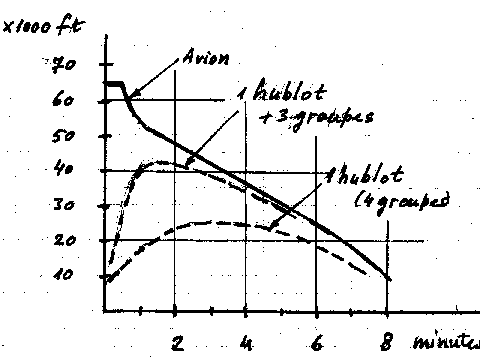Hi,
It is not very often that as a non-pilot I have something of value to contribute. As a climber I have made several climbs to 14,000ft+ without oxygen. Addmittedly, we did it slowly and with acclimatisation at 7-10k ft. But we were able to operate at those altitudes for siginifcant periods (relative to the time of any unpressurised flight).
Perhaps more useful is this graph posted on the 'Concorde question' thread in tech log (a really good read BTW) showing the effects of various pressure failures on Concorde. Note the rate at which the cabin pressure rises (quoted from post 68 by ChristiaanJ:

It shows the emergency descent profile (solid line, 'Avion'), and the resulting effect on the cabin altitude (dotted lines) in the cases of one window ('hublot') blowing out with either three or four air conditioning packs ('groupes') operating.
As the graph shows, in the worst case the cabin altitude rises to about 40,000ft for about two minutes before starting to drop again, which is survivable when breathing oxygen.
It was studies like this, that lead to the small windows on Concorde. Keen spotters may actually notice that the windows on the prototypes are bigger than on all the other aircraft

The diagram is taken from "The Concorde Story" by Chris Orlebar, but the original was so pale that it was uncopyable, so I did redraw it, in answer to a question by a French friend (hence the legends in French).
ChristiaanJ
I think what the discussion so far has missed is the impact of the AC packs if they remain functioning.
EG